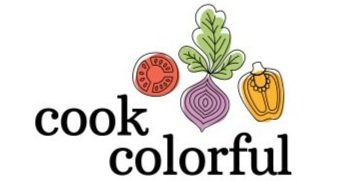Eat to Beat Cancer
PET scans. Uptake of tracer in the lymph nodes involved with lymphoma in the groin, both axilla, and neck (red areas). Image courtesy of Dr. Jorge Carrasquillo, Nuclear Medicine Department, Clinical Center, National Institutes of Health
Today, as I write this, it is National Cancer Day -- a day to remember those we have lost to cancer, as well as a day to look inside ourselves and decide what steps we are going to take to stop it in its tracks.
I have personally lost many family members to cancer, the most devastating being my father. Almost four years ago, I too was diagnosed with cancer -- chronic myelogenous leukemia to be exact. 20 years ago, that diagnosis would have been an almost certain death sentence. Today, we have targeted therapies that allow me to live a normal life. When I was diagnosed, I felt totally out of control. I asked my physician if there was something in my lifestyle that might have caused this or could help it. I was told it was a genetic mutation and there was nothing to do other than to take my medication. I specifically asked about food, and was told there were no foods that helped with cancer. However, in order to regain some control in my life, I took to researching my cancer, and cancer in general. I quickly found functional medicine and multiple studies showing that food can absolutely affect the likeliness that we will develop cancer. As someone who loved to cook, bake, and (most importantly) eat, I spent the next several years learning all I could about food and chronic disease.
A PET scan is typically used to see cancer growing in the human body. It works by injecting radioactive glucose into the body and seeing where it goes. Where it lights up is where there is cancer. The PET scan measures metabolic activity. Cancer is known to use glucose as its primary energy source to grow, and it does this very efficiently. The cancer immediately grabs the glucose from your system, lighting up the scan.
So if we know that cancer feeds on sugar, why do we eat so much of it? According to the Department of Health and Human Services, “two hundred years ago, the average American ate only 2 pounds of sugar a year. Today, the average American consumes almost 152 pounds of sugar per year.” The sugar in our diets increased exponentially with the advent of processed foods. According to the Institute for Food Technologists, sugar not only adds flavor, but also greatly improves the shelf life of processed foods. Other potentially carcinogenic chemicals are also used in our processed foods. As a society, we have gotten away from cooking fresh, nutrient-dense food and moved toward speed and convenience at the expense of our health.
The National Foundation for Cancer Research asserts that “approximately 30-40% of cancer diagnoses could be prevented by modest diet and lifestyle changes”. Fruits and vegetables are loaded with antioxidants, vitamins, and minerals. They are also full of fiber, which has been shown to reduce certain cancers. By limiting your processed foods, cutting down on sugar and alcohol, and increasing your colorful fruits and vegetables, you will go a long way toward preventing cancer. Cooking does not have to be complicated or time-consuming to be nutritious and delicious. Get your family involved and have fun trying to get all the colors of the rainbow into your diet every day!
Action items for chronically great health:
Limit your processed foods
Limit sugar and alcohol
Eat a diet rich in healthy fats (avocado, coconut, nuts & seeds)
Eat a diet rich in colorful fruits and vegetables
Get your family involved by making a game of eating all the colors of the rainbow

